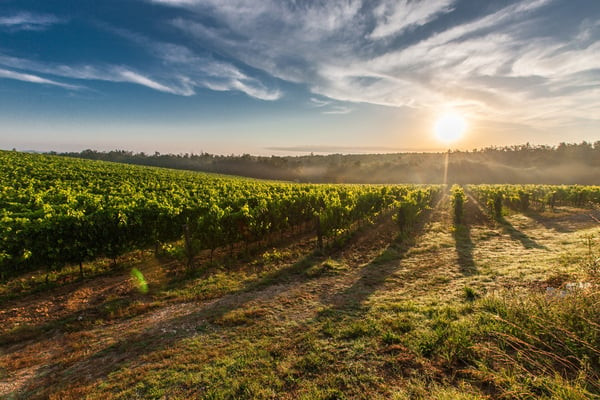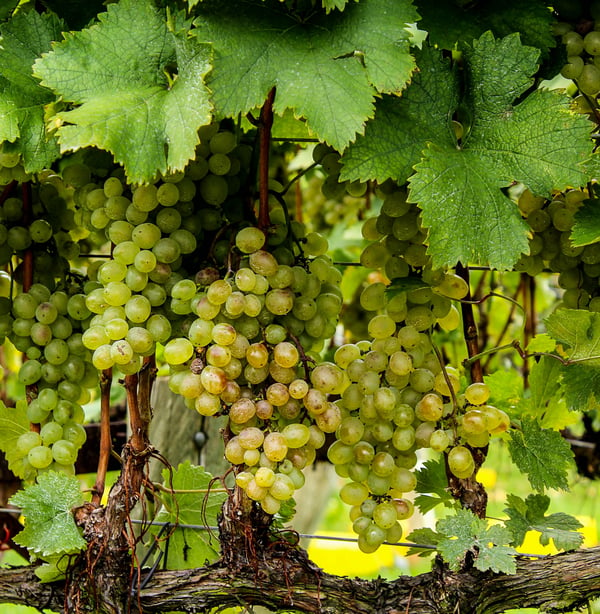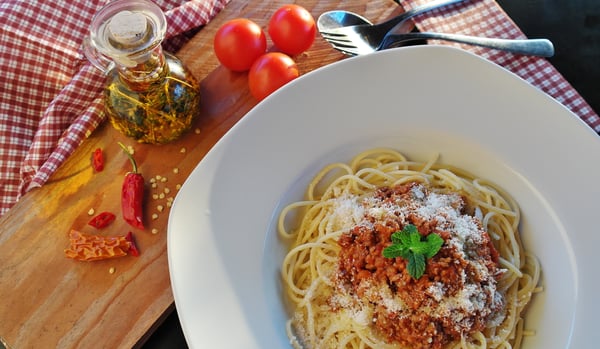
In food, in wine and in the enjoyment thereof, no country rivals Italy.
Prosecco, Italy’s fabulous fizz, is the rising star in the world’s sparkling wine scene. Pinot Grigio is America’s 2nd top-selling white grape variety (after Chardonnay.) Chianti is Italy’s most famous export (after Luciano Pavarotti).
After all, Italy has been the world’s supplier of wine longer than any nation on earth.
In the 3rd century BC, Italy was dubbed Oenetria, the “Land of the Trained Vine” throughout the ancient world. By comparison, the first documentation of French vineyards is dated about 395 AD. Coca-Cola was first released in 1886.
Today, Italy is the world’s top wine producing country and America’s top-selling import.

But for more than 2,000 years in between, until the 1960’s, nearly all Italian wine was sold in bulk, with no reference to grape, vintage, region or producer.
The Italian Renaissance of Wine
On Friday, September 29, we’ll discuss the unique series of international events that ignited Italy’s modern drive to quality in a new wine class, “The Italian Renaissance of Wine” at the Merchandise Mart from 6:30pm to 8pm.
We’ll taste 5 favorite Italian wines paired with stuzzichini (Italian noshes), learn how to read an Italian wine list, practice Italian wine terms and reveal why Chicago is central to Italy’s quantity and quality of wine.
How to Bluff Your Way through Italian Wine
Italy typifies wine’s maxim “If you’re not a little confused, you’re not paying attention.”
Italian wine labels are the most confusing on earth because of the country’s fragmented nature. To cut through the clutter, here are the basics of Italian wine:
Grapes: Italy boasts more than 500 grapes, from Arneis to Zapponara Bianca.
The top-planted red variety is Sangiovese (SAHN- gee-oh-VAY-see), so essential to Italy that its name is derived from “the blood of God.” Sangiovese expresses flavors of bitter cherries, leather and firm tannin, perfect to pair with meats and meaty pasta. Sangiovese is the primary grape of Chianti.
The top-planted white is Trebbiano, with neutral, refreshing flavors, for antipasti and an Italian-style coffee break.

Soil: Italy is a 750-mile long mountain, with rocky soils covering most of Italy’s “boot.” With little water, grapes are small, yielding flavor-packed wine.
Climate: Italy’s climate varies from the snowy Alps in the north to sun-baked Sicily in the south. In addition, infinitesimal vineyards fill every aspect of mountainous terrain. Wine flavors range from lemony refreshment (such as the Bozen, Pinot Grigio we carry at The Chopping Block) to chewy and meaty (Valle dell’Acate, Nero d’Avola, also available at The Chopping Block).
Culture: Italy developed as a collection of city states; still today, many Italians call themselves “Romano” (a native of Rome) or Veneziano (from Venice), rather than Italian.
So too, the wine industry developed in fragments, with grapes and techniques differing at every twist and turn of a mountain pass.
Wines may be named for:
- The grape, such as Pinot Grigio.
- The grape tied to a region, such as Pinot Grigio delle Venezio.
- The growing region, such as Chianti.
- A process, such as Spumante.
- A nomi di fantasia, a fantasy name with no reference to wine, such as Est! Est! Est! (I am! I am! I am!) Other labelling terms include:
- Classico (CLASS-ee-koe): A region’s original zone or classic heart, such as Chianti Classico.
- Frizzante (frizz-AHN-tee): Slightly sparkling. Most Prosecco is frizzante.
- Riserva (rih-ZERV-uh): Wine reserved for extended ageing in barrel and/ or bottle.
- Spumante (spoo-MAHN-tee): Fully sparkling, such as Asti Spumante.
- Superiore (SU-pear-ee-OR-ree): Wine designated as superior, often due to high alcohol content, such as Chianti Classico Superiore.
Che buono questo cibo! (This food is delicious!)
Of course, Italian wine developed hand-in-glove with Italian food.
In the U.S., many folks learned their first foreign language from Italian menus: cannoli, espresso, minestrone, mozzarella, pasta, ragu, spaghetti.

The Chopping Block satisfies your craving for homemade Italian cuisine with Italian cooking classes, including:
- Pasta Workshop, Sunday 9/17 at Lincoln Square
- Italian Surf & Turf, Friday 9/22 at Lincoln Square
- Know your Gnocchi, 9/12 at Merchandise Mart
- The Italian Garden, Sunday 9/17 at Merchandise Mart
Our staff is always happy to recommend Italian wine as a perfect to complement to your culinary creations.
Then, join us on 9/29 for The Italian Renaissance of Wine, to pair wine with all of your favorite Italian dishes.
“Il vino è la luce del sole, tenuto insieme dall'acqua.” (Wine is sunlight held together by water.)
-Galileo Galilei, Italian astronomer, physicist, engineer and mathematician, dubbed “the father of science,” 1564 - 1642

